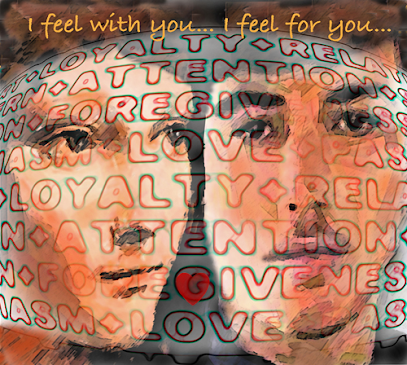Rodin’s rowdy rival: Medardo Rosso, the anarchist who brought sculpture into the modern era.
Medardo Rosso, an enigmatic yet pivotal figure in the evolution of modern sculpture, has long lingered in the penumbra of art history, overshadowed by more celebrated contemporaries such as Auguste Rodin. Despite his relative obscurity among collectors and dealers, Rosso’s name resonates with reverence in artists’ circles, where his radical approach and idiosyncratic personality have earned him a reputation as a true innovator. A recent retrospective at Kunstmuseum Basel seeks to redress this historical imbalance, illuminating the singular vision and enduring influence of this turn-of-the-century Italian sculptor.
Rosso’s artistic trajectory was marked by an early defiance of academic orthodoxy. Born in Turin in 1858, he moved to Milan and enrolled at the Brera Academy, only to be expelled for his rebellious temperament and refusal to conform to traditional methods. This formative rupture presaged a career characterized by relentless experimentation and a penchant for challenging conventions. Eschewing the solidity of marble and stone, Rosso gravitated toward malleable materials such as wax and plaster, which allowed him to capture the fleeting impressions of modern life with an ethereal immediacy. His sculptures, often described as “unfinished,” dissolve the boundary between figure and environment, rendering his subjects as spectral presences emerging from their material substrate.
Unlike Rodin, who achieved fame through monumental public works and savvy self-promotion, Rosso’s practice was insular and self-contained. He preferred intimate, small-scale pieces that were often exhibited in private settings rather than grand boulevards. His neurotic desire for control extended to every aspect of his art; he cast his own works, photographed them himself, and even orchestrated their installation in collectors’ homes in deliberately disconcerting configurations. This obsessive autonomy, while creatively rewarding, limited the dissemination and commercial success of his oeuvre, contributing to his posthumous obscurity.
Rosso’s relationship with Rodin, initially one of mutual admiration, ultimately devolved into rivalry and public acrimony. Rosso accused Rodin of appropriating his innovations without acknowledgment, a dispute that not only ended their friendship but also cast a shadow over Rosso’s reputation in the Parisian art world. Nevertheless, his influence on subsequent generations of artists has been profound. The Impressionists and Futurists alike admired his ability to evoke the transience of perception, while contemporary sculptors continue to draw inspiration from his exploration of materiality and form.
The retrospective at Kunstmuseum Basel underscores the breadth of Rosso’s creative output, encompassing not only sculpture but also photography and drawing. His photographic studies, far from mere documentation, are integral to his artistic vision, imbuing his works with an aura of mystery and otherworldliness. These images, often staged and lit to evoke the Victorian fascination with spirit photography, reinforce the spectral quality of his sculptures and the fugitive nature of his subjects.
Rosso’s legacy, though eclipsed in his lifetime and for decades thereafter, is now being reassessed through such exhibitions, which foreground his pioneering role in the advent of modern sculpture. His refusal to compromise, his relentless pursuit of artistic autonomy, and his innovative manipulation of materials have secured his place as a touchstone for artists seeking to transcend the limitations of their medium. In the words of a contemporary curator, while most collectors may still ask “Medardo who?”, artists continue to fall “to the floor with excitement” at the mention of his name.
WORDS TO BE NOTED-
-
Enigmatic – mysterious; difficult to interpret or understand
-
Penumbra – the partially shaded area around the edges; used metaphorically here to mean the fringes or margins of recognition
-
Orthodoxy – authorized or generally accepted theory, doctrine, or practice
-
Presaged – foreshadowed or predicted a future event
-
Ethereal – extremely delicate and light in a way that seems too perfect for this world
-
Oeuvre – the complete works of an artist, composer, or writer
-
Acrimony – bitterness or ill feeling
-
Transience – the state or fact of lasting only for a short time; transitory nature
-
Dissolution – the closing down or dismissal of an assembly, partnership, or official body; here, the dissolving of boundaries
-
Autonomy – independence or freedom; self-governing
Medardo Rosso was an Italian sculptor from the early 1900s who is not well known to the public, but highly respected by artists. Unlike other famous sculptors like Rodin, Rosso preferred to work alone and made small, delicate sculptures out of wax and plaster. He liked to control every part of his work, from making the sculptures to photographing them and even deciding how they were displayed in people’s homes. Rosso’s art often looked unfinished and ghostly, capturing moments and feelings rather than perfect forms. He had a difficult personality, which sometimes led to arguments with friends and family, and he did not promote his art in the same way others did. Today, his work is being rediscovered, and many modern artists admire his unique style and ideas. The recent exhibition in Basel helps shine a light on his important but overlooked legacy.
SOURCE- THE GUARDIAN
WORDS COUNT- 600
FLESCH-KINCAID- 14




Comments
Post a Comment